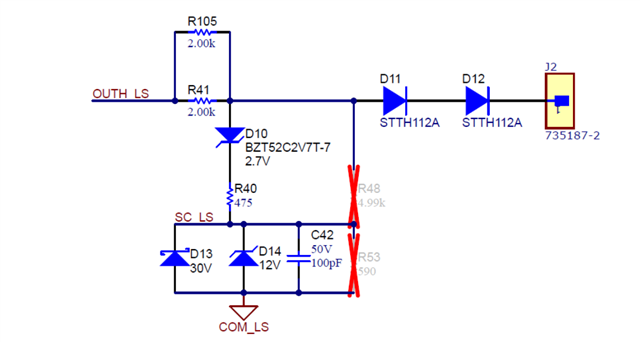Other Parts Discussed in Thread: UCC21750
Tool/software:
Hi
This EVM user guide provides two desat circuits and only one is implemented in the EVM.
I see its due to the IC being used. But if we are to use UCC21750, then the other desat circuit can be populated.
Following image shows the desired desat circuit i would like to know more about.
In here, current limiting resistor is only 475OHM. What is the reason for such a low resistance. Is it ok to use 475?
The extra charging path resistance is also only 1k. That will lead to about 14-15mA constant current draw from the gate driver output pin. is this ok too?
Couldn't find any continuous current ratings for gate driver pins. What is the maximum allowable continuous current for gate driver pins.
Will the 15mA create significant power dissipation in the gate driver?
Regards
Damith

